16 epic Australian animal encounters and where to camp
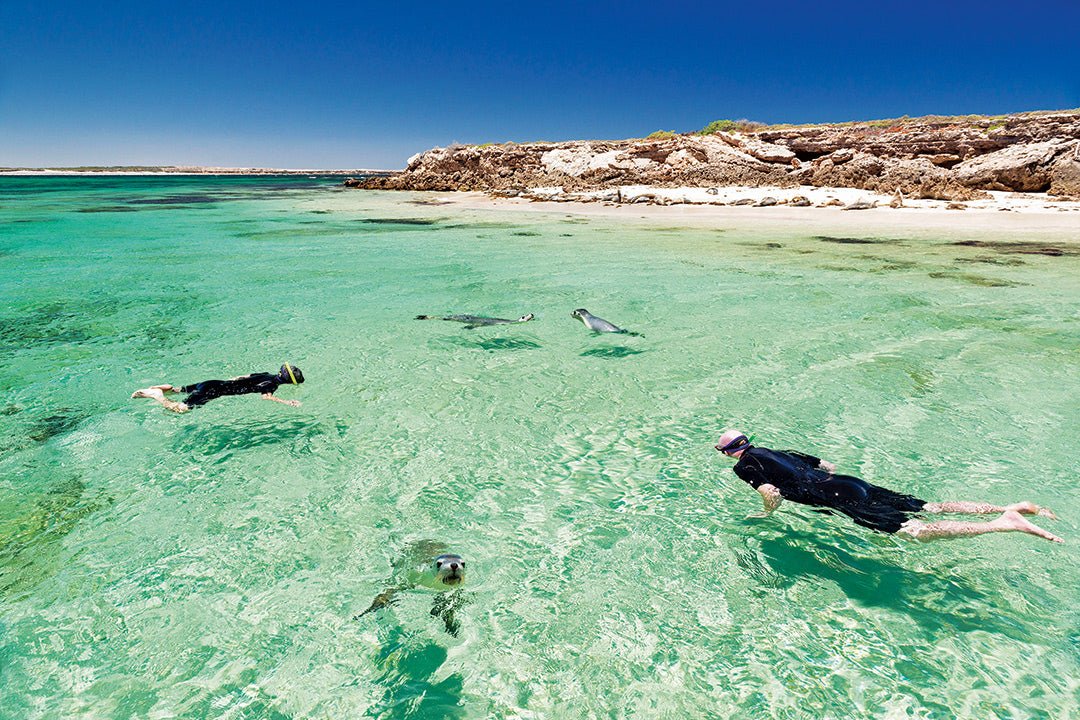
Australia has some very unique wildlife and Laura Waters details some truly special opportunities around the country to see them up close and doing their thing.
1. Giant cuttlefish — Whyalla, South Australia
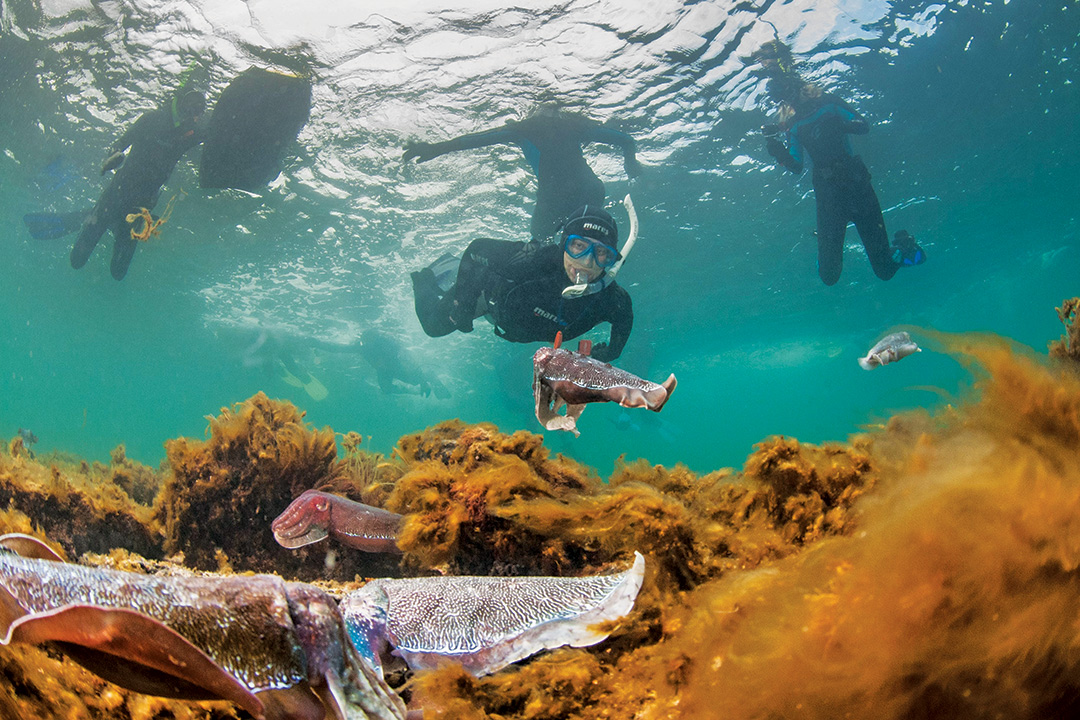 The giant cuttlefish congregate to breed (Image Carl Charter)
The giant cuttlefish congregate to breed (Image Carl Charter)
Whyalla is the only place (or at least, the only known place) in the world where you can come face-to-face with thousands of giant cuttlefish (up to 60cm long) as they congregate to breed. Renowned for their shape-shifting abilities, cuttlefish flash luminescent colours and patterns that are a wonder to behold. Grab snorkelling gear and head just a few metres offshore between Fitzgerald Bay and False Bay. May–August is the season and June–July is peak.
Camp
Nab a serene bush camp along the coast at Fitzgerald Bay or park up at Discovery Parks Whyalla Foreshore.
2. Koalas — Raymond Island, Victoria
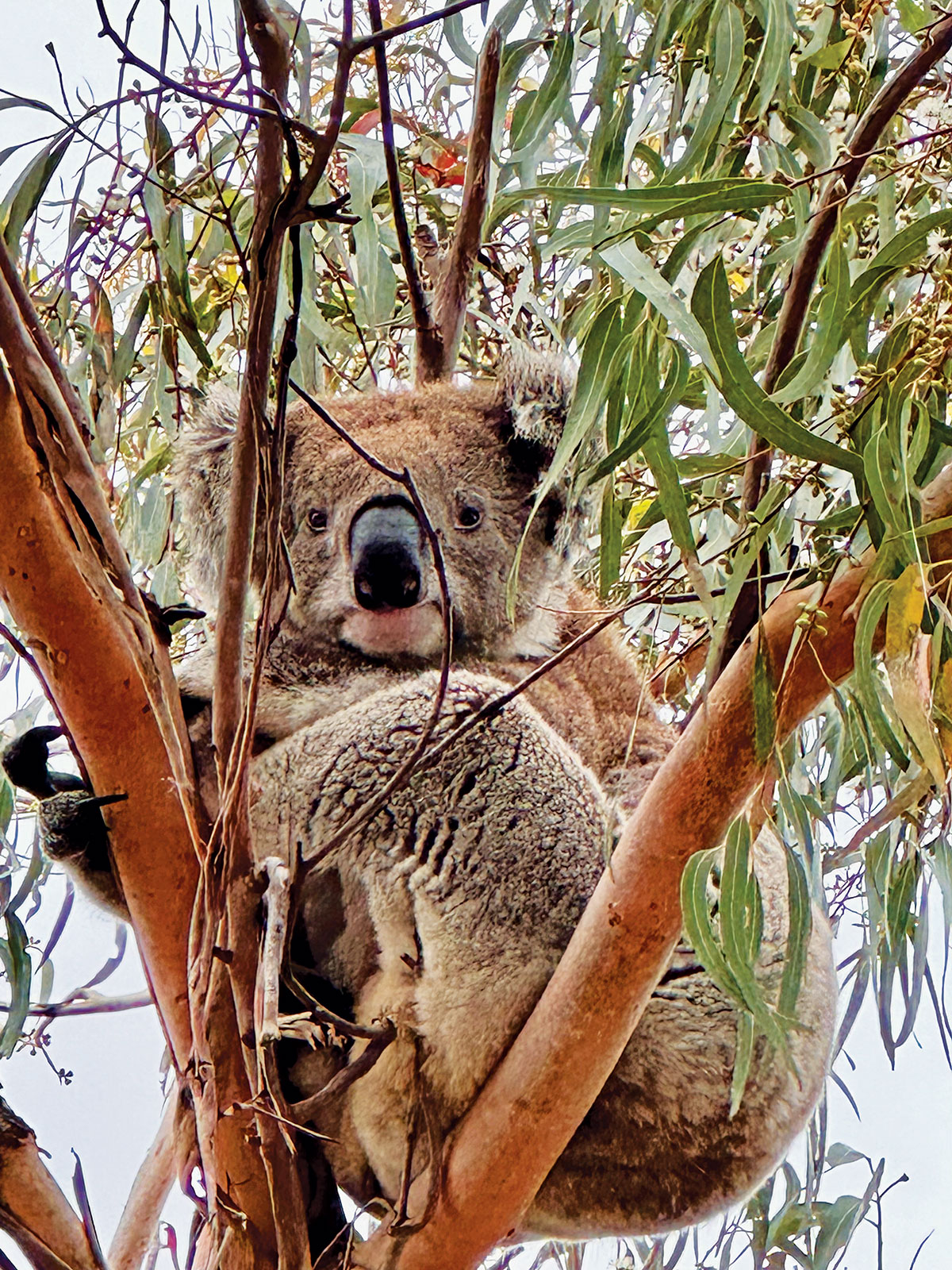
A quick ferry hop from Paynesville in Gippsland lies an island that’s become something of a sanctuary for this endangered species. The island’s population of koalas has gone from 32 in 1953 to around 280, and you’re guaranteed to spot plenty on the 1.7km Koala Walk, which starts just moments from where the ferry drops you off. This sleepy island is also great for birdwatching, spotting wild orchids or just enjoying the serenity.
Camp
You’re best staying in Paynesville (you can walk to the ferry). Allawah Caravan and Boat Park is waterfront or try Paynesville Holiday Park.
3. Sea lions — Baird Bay, South Australia
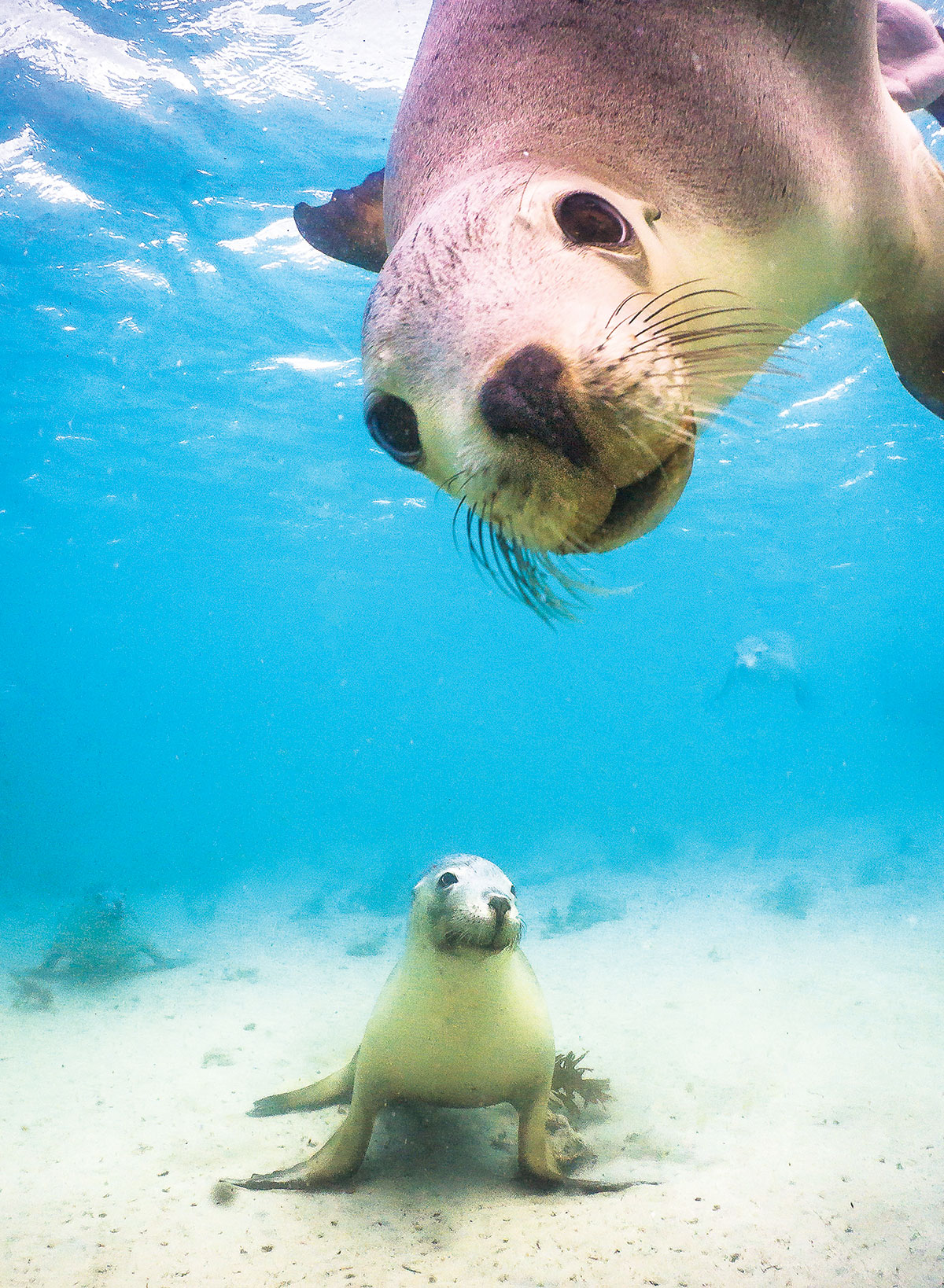 Puppies of the sea in Baird Bay, SA (Image David Edgar)
Puppies of the sea in Baird Bay, SA (Image David Edgar)
Spend a morning rolling and diving with Australian sea lions and you’ll know why they’re called the ‘puppies of the sea’. There are few things more joyous than playing with them, and in the stunning and pristine waters of the Eyre Peninsula’s Baird Bay is a colony where a close encounter is virtually guaranteed. A half-day tour with Baird Bay Ocean Eco Experience is one for the bucket list and they’ll take you to swim with dolphins too. September–May is ideal.
Camp
There’s $15 council-run camping with basic facilities at Baird Bay and nearby Streaky Bay or stay at Discovery Parks for more comforts.
4. Platypus — Maleny, Queensland
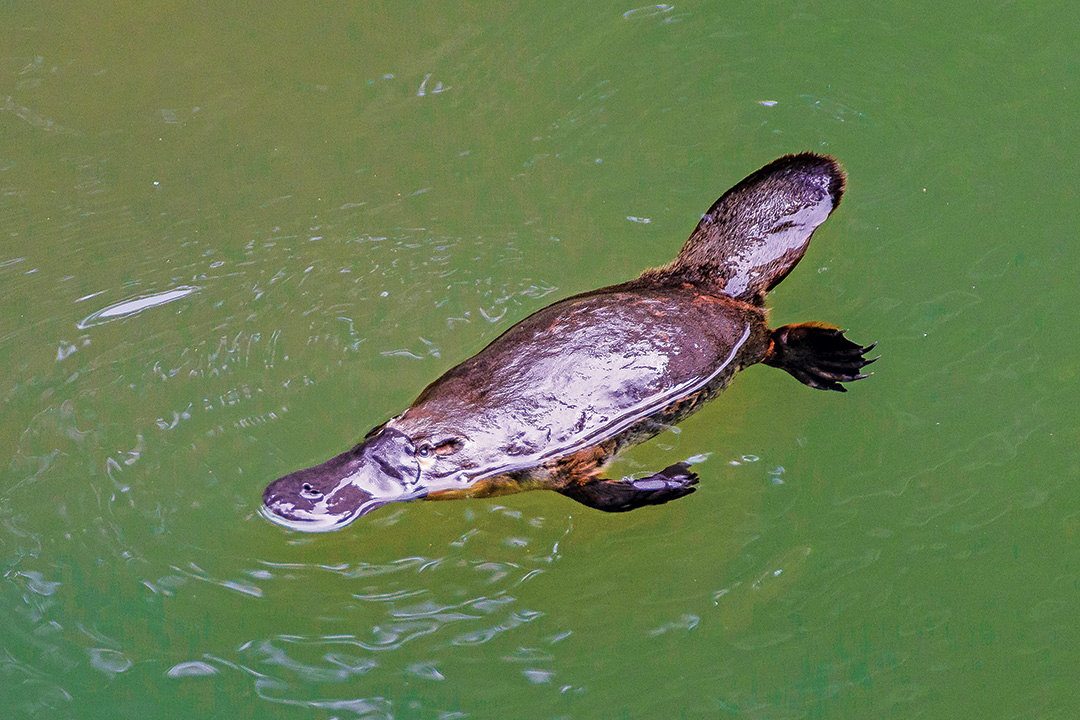 An elusive platypus (Image Tourism and Events Queensland and Jewels Lynch)
An elusive platypus (Image Tourism and Events Queensland and Jewels Lynch)
The cute Sunshine Coast Hinterland town of Maleny is one of the best places to spot this elusive creature. Keep your eyes peeled as you follow the 1km Maleny Boardwalk alongside Obi Obi Creek. Dawn and dusk are prime spotting times, however, the light for taking photos is best in the morning. Alternatively, take a guided tour with Platypus Whispers which has a 95 per cent success rate of spotting them and provide a whole lot of intel too.
Camp
There’s plenty of great bush camping around Booloumba, half an hour away. Little Yabba Creek Rest Area is free or try Booloumba Creek (a small fee through Queensland Parks and Wildlife).
5. Wombats — Maria Island, Tasmania
 Get up close and personal on Maria Island (Image Tourism Australia)
Get up close and personal on Maria Island (Image Tourism Australia)
There are so many wombats (like, thousands) on Maria Island you almost trip over them at times. Late afternoon is a great time to go for a wander, and while the grass surrounding tiny Darlington settlement is a popular grazing spot, you’ll also see them alongside the walking tracks that radiate from it. Maria is also a hotspot for other wildlife like Cape Barren geese and Tasmanian Devils and has lots of great beaches and hiking trails to explore.
Camp
There are no cars on the island, but you can carry camping gear over (book sites through Tasmania Parks and Wildlife) or stay at Triabunna Cabin & Caravan Park, near the ferry point.
6. Crocodiles — Kakadu National Park, Northern Territory
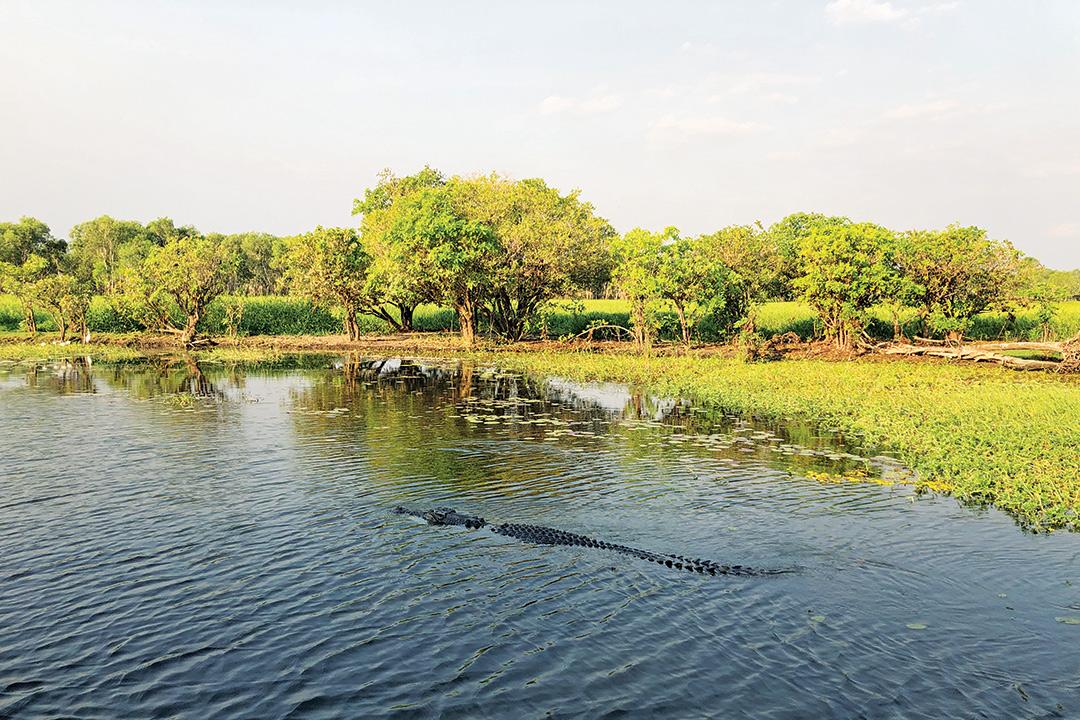
Granted, crocodiles are all over the Northern Territory, but if you want to slink quietly through a landscape teeming with them, and see them exhibiting their natural behaviours, you can’t beat a cruise on Yellow Water Billabong and the South Alligator River. It honestly feels like something out of a David Attenborough documentary. Around 1000 crocs live in the 10km area explored, a watery maze of reeds, water lilies and paperbarks that also makes an excellent natural habitat for water buffalo and abundant birdlife (Kakadu National Park contains a third of Australia’s bird species).
Camp
Camp at any of the 300 shaded sites at Cooinda Lodge Kakadu, just a few minutes from the cruise departure point.
7. Humpback whales — Hervey Bay, Queensland
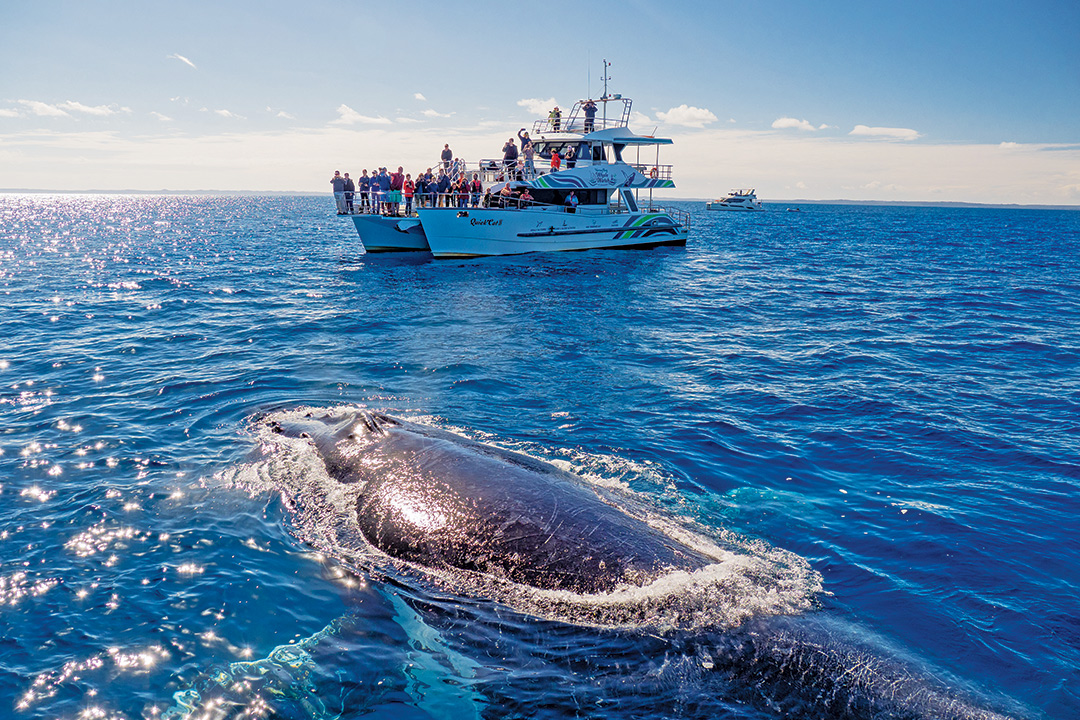 Whale watching in Hervey Bay, Qld (Image Tourism and Events Queensland)
Whale watching in Hervey Bay, Qld (Image Tourism and Events Queensland)
Whales can be spotted all along the east coast but the calm and sheltered waters of Hervey Bay is the only known place in the world where they pause migration to rest and socialise. It means sightings are guaranteed in season (August–October is peak) and you can often get close enough to study the barnacles on their skin. Plenty of boat operators offer trips to watch them swim and breach — either from the surface or from underwater viewing cabins — and some even offer the opportunity to get in the water with them.
Camp
Discovery Parks offers a leafy oasis right in Hervey Bay or head to Trinity Islands Holiday Park for spacious waterfront sites set around three islands on a private lake.
8. Cassowaries — Etty Bay, Queensland
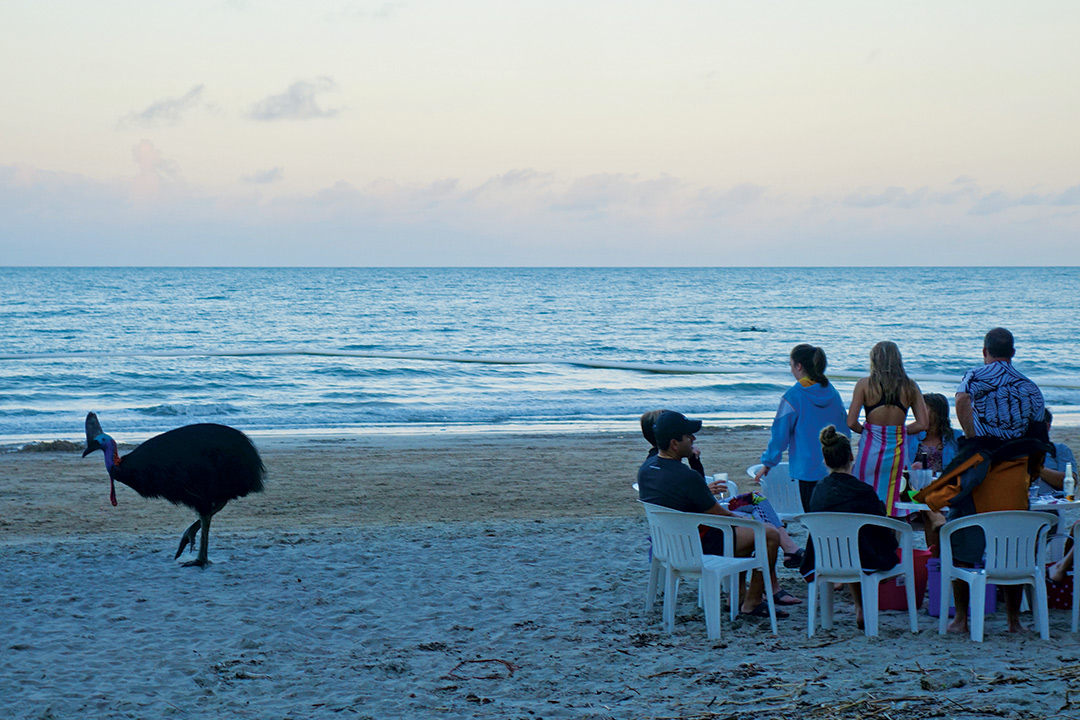
Australia’s largest bird inhabits the lush rainforests of Far North Queensland, and though endangered and often hard to find, cassowary sightings are pretty much guaranteed at isolated Etty Bay. Early morning and late afternoon are the best times to spot them wandering the 700m beach. Although they’re not shy, it’s best to keep your distance since these horned and clawed giants can inflict serious injuries if they feel threatened.
Camp
The waterfront Etty Bay Caravan Park & Cabins is the place to stay, and frequently has cassowaries foraging amid the tents and vans.
9. Killer whales — Bremer Bay, Western Australia
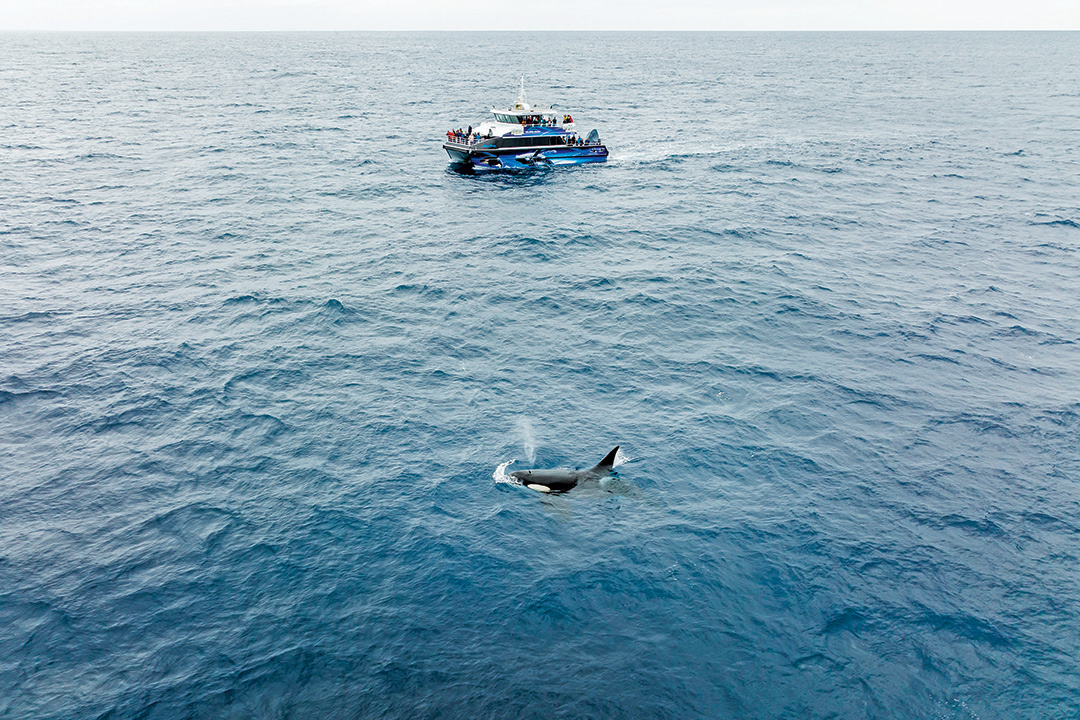 Boat operators will take you to see the largest congregation of killer whales in the South Hemisphere (Image Tourism Western Australia)
Boat operators will take you to see the largest congregation of killer whales in the South Hemisphere (Image Tourism Western Australia)
You’ll be on a high for days after this one. It’s not often you get to see the ocean’s apex predator, but Bremer Canyon has the largest congregation of orcas in the Southern Hemisphere — with sightings virtually guaranteed. Boat operators will take you out to where deep-sea canyons attract tonnes of marine life. Spotting pilot, beaked and sperm whales is also common here. January–April is the season.
Camp
If you’ve got a 4WD you can camp on the east and northeast sides of Bremer Bay, or, alternatively, stay at one of the two caravan parks.
10. Camels — Broken Hill, New South Whales
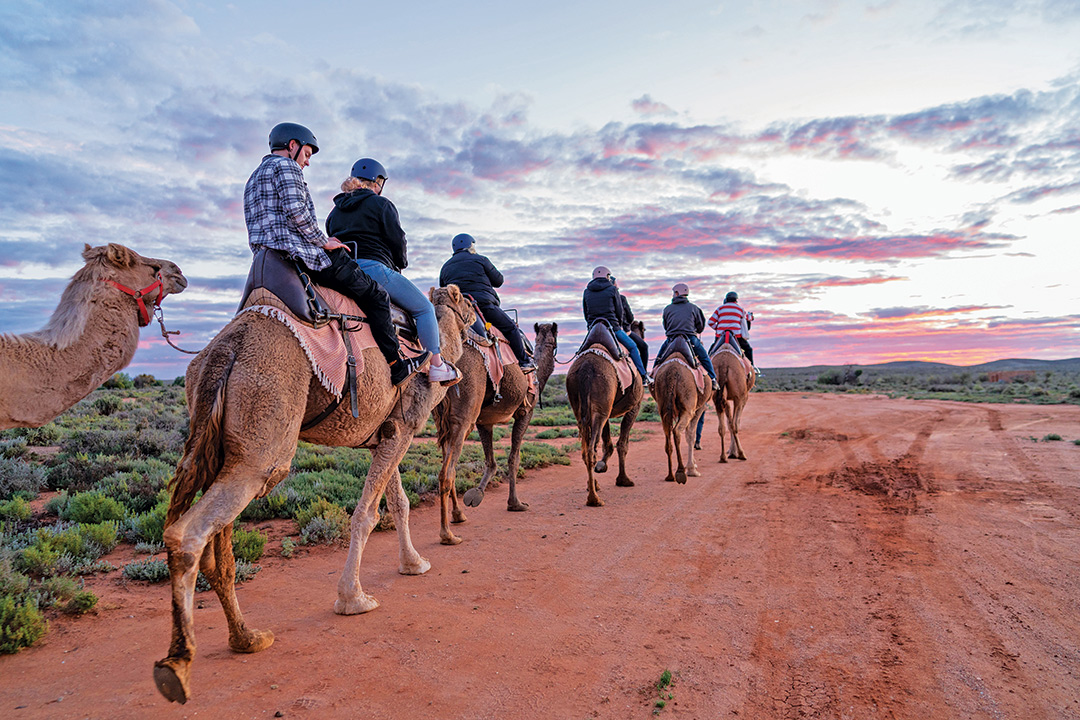 Sunset from the back of a camel at Silverton, NSW (Image Destination NSW)
Sunset from the back of a camel at Silverton, NSW (Image Destination NSW)
They may not be native, but camels have a long history in Australia thanks to early pioneers and explorers, and there are around a million of them roaming the outback. The flock at Silverton (20 minutes from Broken Hill) isn’t wild but it’s still cool to get up close to them. You can take a ride from anywhere from an hour — travelling through the historic silver mining town or taking a sunset walk — or go the full Burke and Wills experience (their exploratory 1860 route isn’t far from here) on an overnight trek, sleeping in a swag under the stars.
Camp
If you’re not doing the overnight trek, park up at the camel farm alongside other animals like emu, red deer, goats and alpaca.
11. Emus (and more) — Wilsons Promontory, Victoria
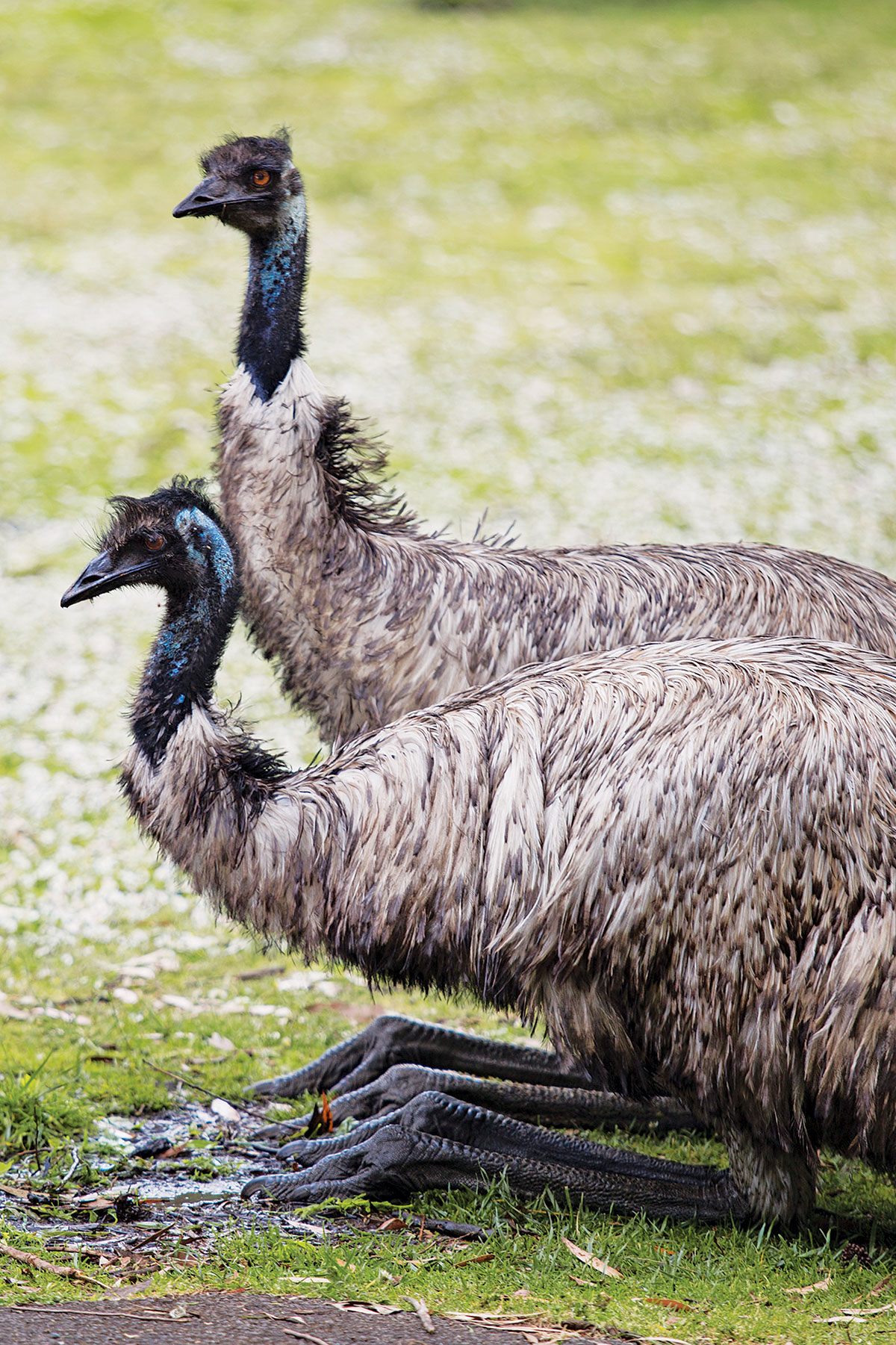
This stunning granite promontory encircled by white-sand beaches and aqua bays is a wildlife haven. It’s huge and packed with epic hiking trails but the 45-minute Wildlife Walk is aptly named if you’re keen to see some animals. It leads across open grasslands where emus roam, along with wombats, kangaroos and wallabies. Tidal River is another hotspot for wombats, particularly in the early morning and dusk.
Camp
Stay at the huge and sprawling campsite tucked amongst the tea trees, next to the ocean and Tidal River, managed by Parks Victoria.
12. Great white sharks — Port Lincoln, South Australia
 Up close with great whites (Image Calypso Star Charters)
Up close with great whites (Image Calypso Star Charters)
You don’t need to be a scuba diver to enjoy the thrill of (safely) coming face-to-face with a great white shark. Calypso Star runs cage dive day trips off the Neptune Islands, a hotspot for sharks, where all you need to do is stand in a shark cage just below the surface and breathe through a regulator. Even watching great whites from the boat is a huge thrill. Being wild and nomadic, sightings aren’t guaranteed, but trips operate year-round with the most successful months being April–July (December–January is good too).
Camp
National Parks and Wildlife Service South Australia runs a few campgrounds in the area, including Horse Rock (20 minutes away) and Engine Point with its Maldives-esque beach (40 minutes away). Alternatively, enjoy all mod cons in a central location at Port Lincoln Tourist Park.
13. Turtle swim — Tweed Heads, New South Whales
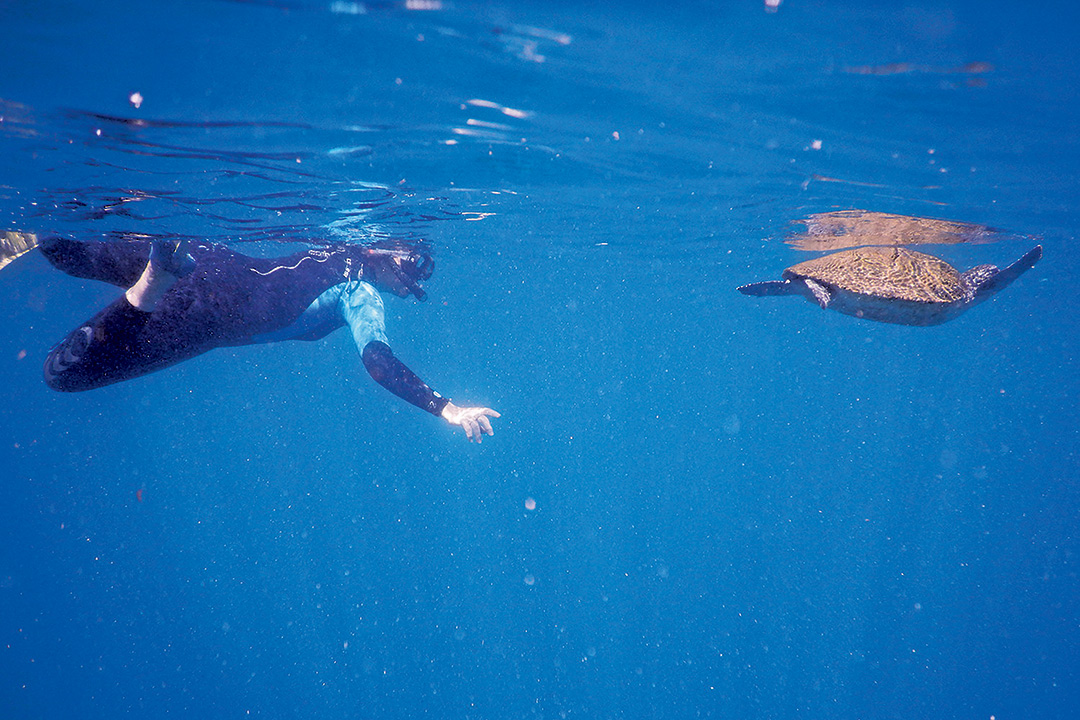
It’s only a 15-minute boat trip offshore from Fingal Head to the permanent population of green, hawksbill and loggerhead turtles that linger around the volcanic outcrop of Cook Island. They’re not at all shy either, letting you get close enough to really study them in detail, from scaley flippers to shells, beaks and eyes. Watersports Guru leads guided snorkelling trips, and in summer there’s a good chance of seeing the beautiful and harmless leopard shark too.
Camp
There are seven holiday parks here to choose from. Your cheapest bet is Murwillumbah Showgrounds at $35 for two people.
14. Turtles nesting — Bundaberg, Queensland
 Learn about turtle research and conservation at the Mon Repos Turtle Centre in Bundaberg (Image Tourism and Events Queensland)
Learn about turtle research and conservation at the Mon Repos Turtle Centre in Bundaberg (Image Tourism and Events Queensland)
If you prefer to see turtles from a beach, Mon Repos is the place to go. It attracts the largest concentration of nesting marine turtles on the eastern Australian mainland and the most significant loggerhead nesting population in the South Pacific. Mon Repos Turtle Centre is open year-round but after dark, during breeding season, rangers lead guided tours to watch the sea turtles do their thing (nesting is November–February, hatchlings leave nests during January–March) and learn about turtle research and conservation.
Camp
CMCA RV Park Bundaberg is a bargain at $3 per night for members ($15 for non) or try AAOK Riverdale Caravan Park on the Burnett River.
15. Whale sharks — Exmouth, Western Australia
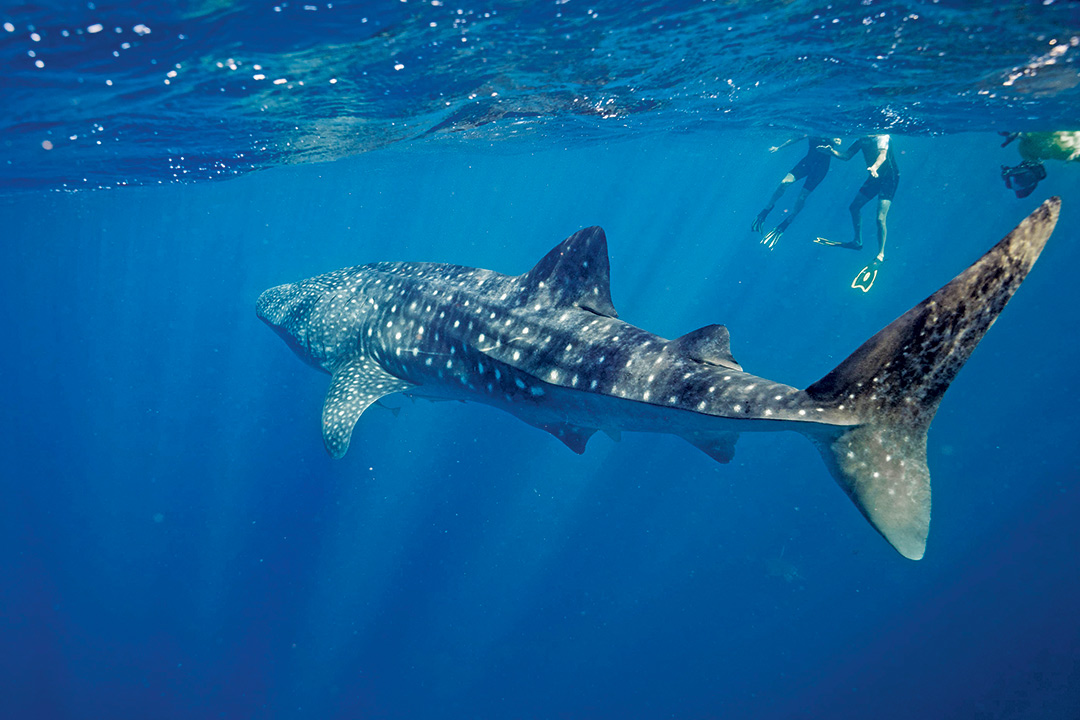 Whale sharks at Ningaloo Reef, WA (Image Tourism Western Australia)
Whale sharks at Ningaloo Reef, WA (Image Tourism Western Australia)
Many say it’s a life-changing experience to swim with whale sharks, the biggest fish in the sea at up to 12 metres long. These spotted gentle giants cruise just below the surface, making it easy to swim alongside with snorkelling gear, and numerous boat operators will take you to where they are. Other marine life such as manta rays, dugongs, turtles and whales are often spotted on the way. Ningaloo Reef is the world’s largest fringing reef so it’s worth having a good look around while you’re there. Whale shark season is March–August.
Camp
There are plenty of great bush campsites in Cape Range National Park or stay somewhere with full facilities like RAC Exmouth Cape Holiday Park.
16. Desert creatures and birds of prey — Alice Springs, Northern Territory
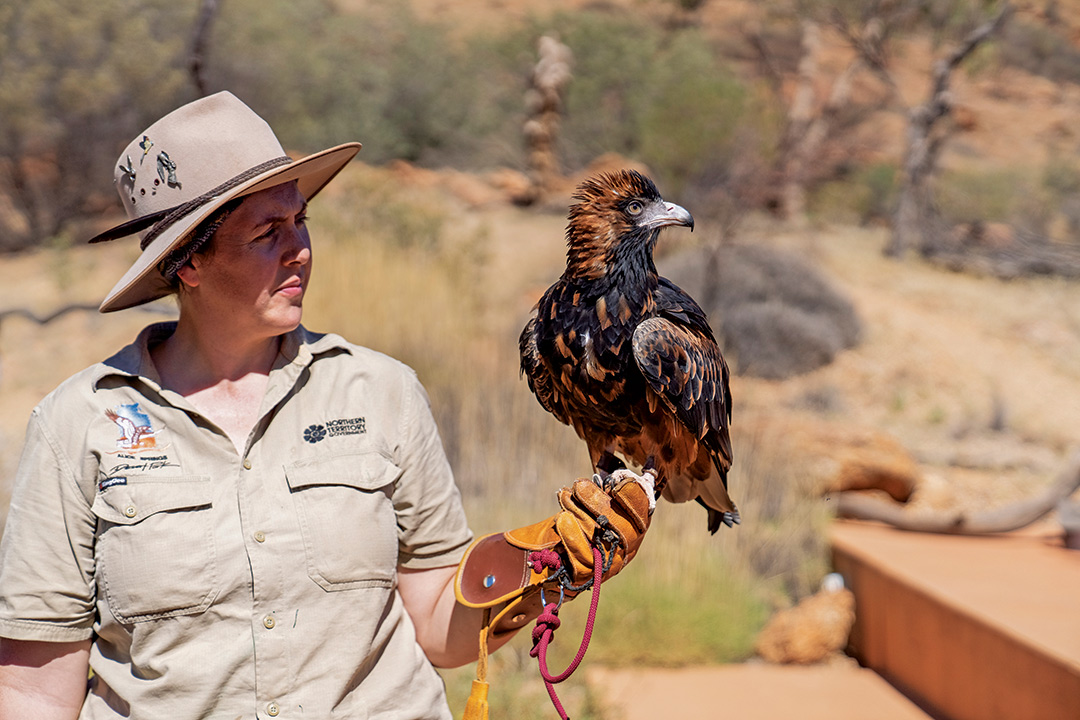 A ranger holds at wedge-tailed eagle at Alice Springs Desert Park (Image Tourism NT and Yuri Kardahyan
A ranger holds at wedge-tailed eagle at Alice Springs Desert Park (Image Tourism NT and Yuri Kardahyan
If you want to see the birds and animals of the Red Centre, head to Alice Springs Desert Park. With three walk-through habitats and a nocturnal house spread across 52 hectares, it brings together creatures that might be otherwise challenging to find, such as bilbies, bettongs, quolls and thorny devils. Their exhilarating bird of prey demonstration is a big draw, showing the natural hunting and foraging behaviours of predators like whistling kites and wedge-tailed eagles.
Camp
Parks and Wildlife Commission of the Northern Territory has camping at numerous bush locations in the Tjoritja / West MacDonnell Ranges, but closest is Alice Springs Tourist Park, 5km away.
THE NEXT STEP
Are you ready to experience the freedom of the open road? Don't wait - Find your dream getaway now!
RELATED ARTICLES:
Warrnambool, Victoria: A Great Ocean Road coastal adventure







